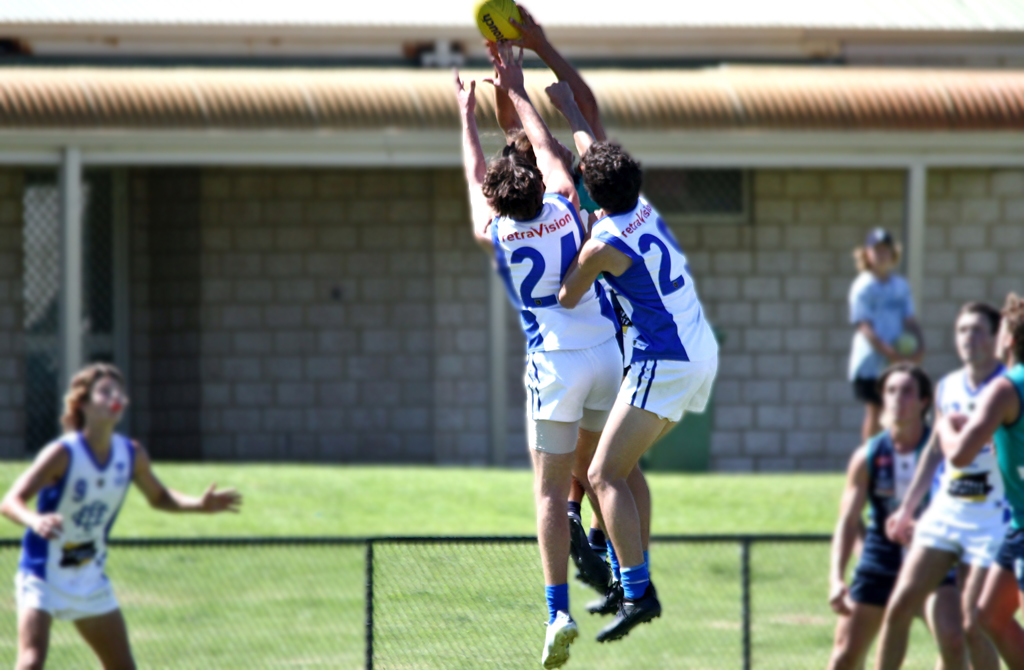Concussion in sport has been a headline topic the last two years in particular with the NFL and AFL, two high impact contact sports.
There has been more evidence and research going into finding out if there is a long term impact on players that suffer multiple concussions through their playing careers.
I thought it would be a good time to talk about concussion in sport with the NFL season in full swing now and the AFL pre-season getting underway.
Recently the Port Adelaide Football Club in the AFL came under fire for allowing one of their players Hamish Hartlett to re-enter the game in shorter period of time than the AFL felt suitable.
On my recent trip to Adelaide Oval, I was in the unfortunate position of helping a player out with concussion, it was the first time treating a player with concussion.
Being around the team doctor and experienced physiotherapists as well as trainers made the management run smoothly.
This blog is about providing some information about concussion in sport, recognising signs and symptoms and management of a player with concussion.
Hollywood spin-off
Hollywood has been caught up in on the focus of concussion in sport by recently releasing a movie in which Will Smith starred.
The movie is based on a true story about Dr Bennet Omalu who conducted his own research in post-mortems of the brains of former NFL players finding a link between the multiple concussions they suffered in games to mood disturbances, depression and short attention spans.
At the time Dr Omalu research was dismissed by the NFL, only later did they acknowledge the link he had made.
AFL stats on concussion
The AFL and NFL have undergone major rules changes in regards to concussion and the player’s ability to return to play the same day.
Injury incidence and prevalence have both increased since 2006 in the AFL, however this may be due to better recognition and treatment of the players, with further understanding that there is a link between concussions suffered in sport and the neurodegenerative conditions later in life.
New injuries per club have increased from 0.3 to 1.5, from 2006 to 2015 respectively.
Missed games per club have increased from 0.3 to 4.2, in the same timeframe.
![]() Signs and symptoms of a concussion
Signs and symptoms of a concussion
Having seen a concussion and managing it with a sports physician these are some of the signs and symptoms to look out for if you suspect someone has been concussed
- Headache
- Emotional symptoms
- Loss of consciousness
- Amnesia
- Irritability
- Slowed reaction times
- Insomnia
It is important to note that note everyone losses consciousness if they have been concussed, this is where it is important to be on the lookout for the other symptoms.
On-field management
It is hard because at most junior and amateur clubs there is no doctor present, however the player should be removed from the play and referred to a doctor.
If there is a doctor present it is best for the player to be evaluated by them immediately at the ground, the doctor would perform a SCAT3 which is Sport Concussion Assessment Tool.
Later concussion management
Physical and cognitive rest until acute symptoms resolve.
From there you can begin a graded return of exertion prior to medical clearance and return to play.
Further research is needed to evaluate the long-term outcome of rest and optimal time of rest.
Local sporting teams
If you are associated with a local sporting club then it is important to know what to do in the situation if a player in the game suffers a concussion.
The most important action to take in junior sport is to take the player out of the game and take no further part that day.
There are information sheets for clubs and parents on various websites.
The AFL community website has multiple fact sheets.

